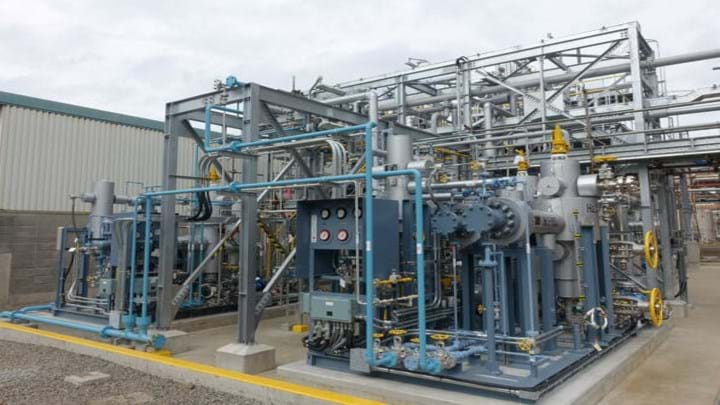Sumitomo Chemical CO2-to-methanol pilot plant now operational

SUMITOMO CHEMICAL has completed the construction of a pilot facility which uses CO2 generated from the incineration of waste, and hydrogen derived from renewable energy, to produce methanol.
Methanol is used as a basic raw material in many chemical products, including adhesives, drugs, coating materials, and synthetic resins, as well as for light olefins, including ethylene and propylene. Approximately 80m t/y of methanol is used by industry, but currently it is manufactured via several processes that require high temperatures and high pressures, which in turn use fossil fuel resources, mainly natural and coal gases.
While carbon capture and utilisation (CCU) is often cited as a key technology for recovering CO2 and using it in products, the conventional CO2-to-methanol conversion processes have faced challenges, such as low yield due to the reversible nature of the reaction, and catalyst degradation caused by byproduct water.
With the help of an internal condensation reactor (ICR) which enables the condensation and separation of methanol and water – something that is impossible with conventional technologies –Sumitomo says, these issues have now been resolved.
The ICR has been jointly developed with Koji Omata of Shimane University Interdisciplinary Faculty of Science and Engineering. Along with needing smaller equipment, improving yield, and achieving higher energy efficiency, the reactor is also expected to prevent catalyst degradation.
Sumitomo’s pilot plant, built with the support of the New Energy and Industrial Technology Development Organisation (NEDO) Green Innovation Fund, is based at its Ehime Works, in Niihama City, Japan. Now operational, the company aims to complete the demonstration of its technology by 2028. Sumitomo also said it wants to start commercial production using the new process and license the technology to other companies in the 2030s.
Recent Editions
Catch up on the latest news, views and jobs from The Chemical Engineer. Below are the four latest issues. View a wider selection of the archive from within the Magazine section of this site.




